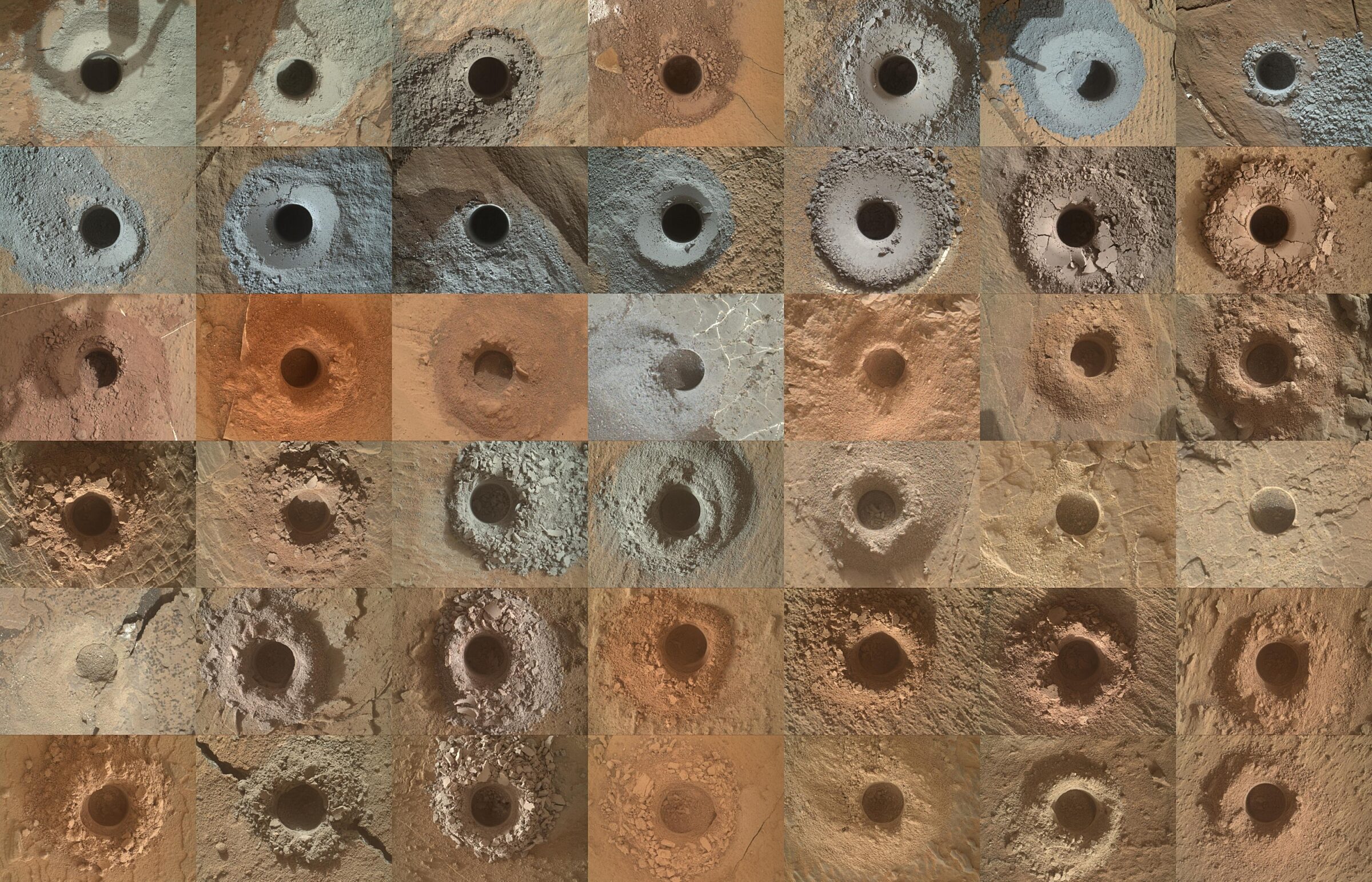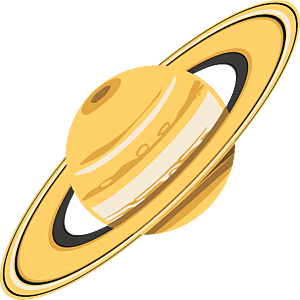The Downlink • Sep 06, 2024
Inside, underneath, backward, upside-down
Space Snapshot

NASA's Curiosity rover has been busy. Since it landed on Mars in 2012, it has drilled into 42 rocks (pictured) with its robotic arm to collect samples. Unlike the Perseverance rover, Curiosity isn’t caching samples for return to Earth. Whenever it drills a sample, Curiosity can only use its onboard scientific instruments to analyze the composition of the rock to learn about Mars’ geology and to search for evidence that the planet could once have supported Earth-like life. Image credit: NASA / JPL-Caltech / MSSS.
Fact Worth Sharing

NASA's Curiosity rover was the first mission ever to drill below the surface of another planet. Reaching that milestone took a lot of work. When testing drills for the mission, the Curiosity team bored more than 1,200 holes in 20 types of rock on Earth.
Mission Briefings


A gigantic asteroid impact likely shifted Ganymede’s axis. Jupiter’s moon, the largest in the Solar System, shows signs of a major impact event in its past. New research suggests that this impact, which likely happened 3 billion years ago, may have been by an asteroid with a diameter of around 300 kilometers (185 miles), about 20 times larger than the one that hit the Earth 65 million years ago. The impact would have been powerful enough to tilt Ganymede’s axis, pointing its north pole away from Jupiter (pictured in this artist’s impression). Image credit: HIRATA Naoyuki.

NASA’s solar sailing spacecraft has deployed its sails. The Advanced Composite Solar Sail System (ACS3) is now fully deployed in Earth orbit. The mission, which drew on the lessons learned from The Planetary Society’s LightSail 2 solar sailing spacecraft, will next test the maneuvering capabilities of the sail in space.

Boeing’s Starliner will return to Earth empty on Sept. 6. The capsule, which was meant to return astronauts Butch Wilmore and Suni Williams home from the International Space Station, has been facing multiple technical issues and will return to Earth uncrewed on Friday. Wilmore and Williams are now slated to return in a SpaceX capsule in February 2025.

BepiColombo’s arrival at Mercury will be delayed. The joint ESA-JAXA mission to Mercury will have to adjust its trajectory, delaying its orbital insertion by almost a year because of problems with its electric thrusters. The mission, which will now arrive at Mercury in November 2026, will still be able to carry out all of its science objectives.
From The Planetary Society


Europa Clipper is almost ready for launch. The NASA spacecraft will travel to Jupiter’s moon Europa, which may hide an enormous subsurface ocean as well as lakes (like the one depicted in this artist’s illustration) scattered throughout the moon's icy shell. This week’s Planetary Radio revisits over 20 years of interviews about the moon, the mission, and the possibility of Europan life. Image credit: Britney Schmidt / Dead Pixel VFX / Univ. of Texas at Austin.

When a planet is in the habitable zone, does that mean it’s habitable? The area around a star where liquid water can be stable on a planet’s surface is called the habitable zone, but water is far from the only condition of actual habitability. One of our latest articles explores why the habitable zone is a useful, but complicated, concept.

China is planning an exoplanet-hunting space telescope. The Tianlin Space Telescope, which is planned for launch in the next 10-15 years, would be a next-generation observatory to look for potentially habitable nearby worlds. Key mission objectives would include detecting and characterizing rocky planets, studying their formation and evolution, and looking for potential biosignatures, or signs of life.

Explore the Cosmos with The Planetary Society and Lerner Publishing. The Planetary Society and Lerner Publishing Group have teamed up to bring young readers an engaging series of books that make space science fun and accessible. Learn more about the new book series and how you can help get it into your local library.
What's Up

On Sept. 8, Saturn will be at opposition, on the opposite side of Earth from the Sun. This means it will rise in the east at sunset and set in the west at sunrise. Reddish Mars rises in the east in the middle of the night, bright Jupiter above it. Learn more about what to find in September’s night skies.
Wow of the Week

This mind-bending photo shows an upside-down reflection in the primary mirror being built for NASA's NEO Surveyor spacecraft. The mirror shows the reflection of principal optical engineer Brian Monacelli, who is also seen bending over it. The mirror’s concave shape makes the reflection appear upside down. Image credit: NASA/JPL-Caltech.
Send us your artwork!
We love to feature space artwork in the Downlink. If you create any kind of space-related art, we invite you to send it to us by replying to any Downlink email or writing to [email protected]. Please let us know in your email if you’re a Planetary Society member!


 Explore Worlds
Explore Worlds Find Life
Find Life Defend Earth
Defend Earth

